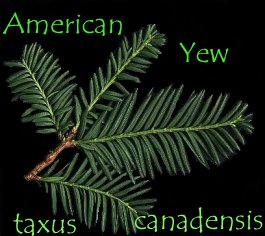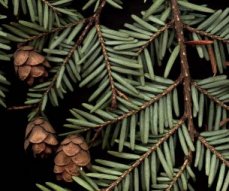A | B | C | D | E | F | G | H | I | J | K | L | M | N | O | P | Q | R | S | T | U | V | W | X | Y | Z


Also called:
Ground Hemlock, Canada Yew, Eastern YewRange:
Newfoundland west to Manitoba, south to Virginia, Tennessee, Illinois, and Iowa.Habitat:
cool, damp woods and wooded swamps; along bog borders and gullies.Yew provides an important winter food for white-tailed deer and moose, who highly prefer it among other trees.

Caution:
The bark, leaves, and seeds contain a heart depressant alkaloid. If you swallow enough seeds, or decide you like the taste of the shrubbery and eat fifty needles, your heart will stop beating. The plant is the universal symbol of death.Native Americans use the twigs and leaves as a sedative, because small dosages slow the heartbeat. It is used in teas for urinary problems and stomach pains, and inhaled in sweat baths for rheumatism and paralysis.
 Littleflower's Shops l Lame Wolf's Den l Healing Remedies l Medicinal Plants l Big Mountain, Arizona l Help a native elder l Herbs & Vegetables l American Indian Music l Gardening l People of Starlight l Contact Us l
Littleflower's Shops l Lame Wolf's Den l Healing Remedies l Medicinal Plants l Big Mountain, Arizona l Help a native elder l Herbs & Vegetables l American Indian Music l Gardening l People of Starlight l Contact Us l

